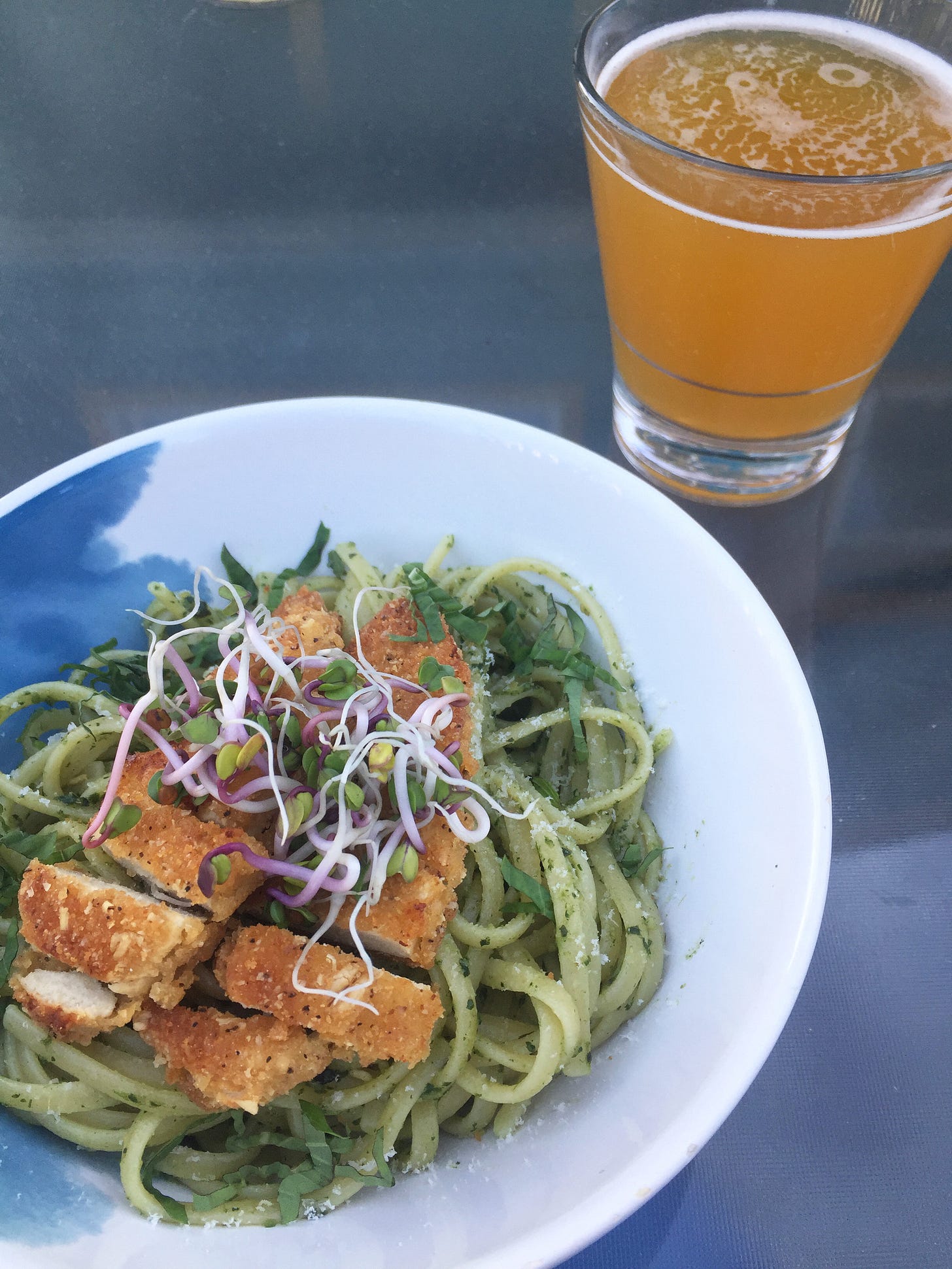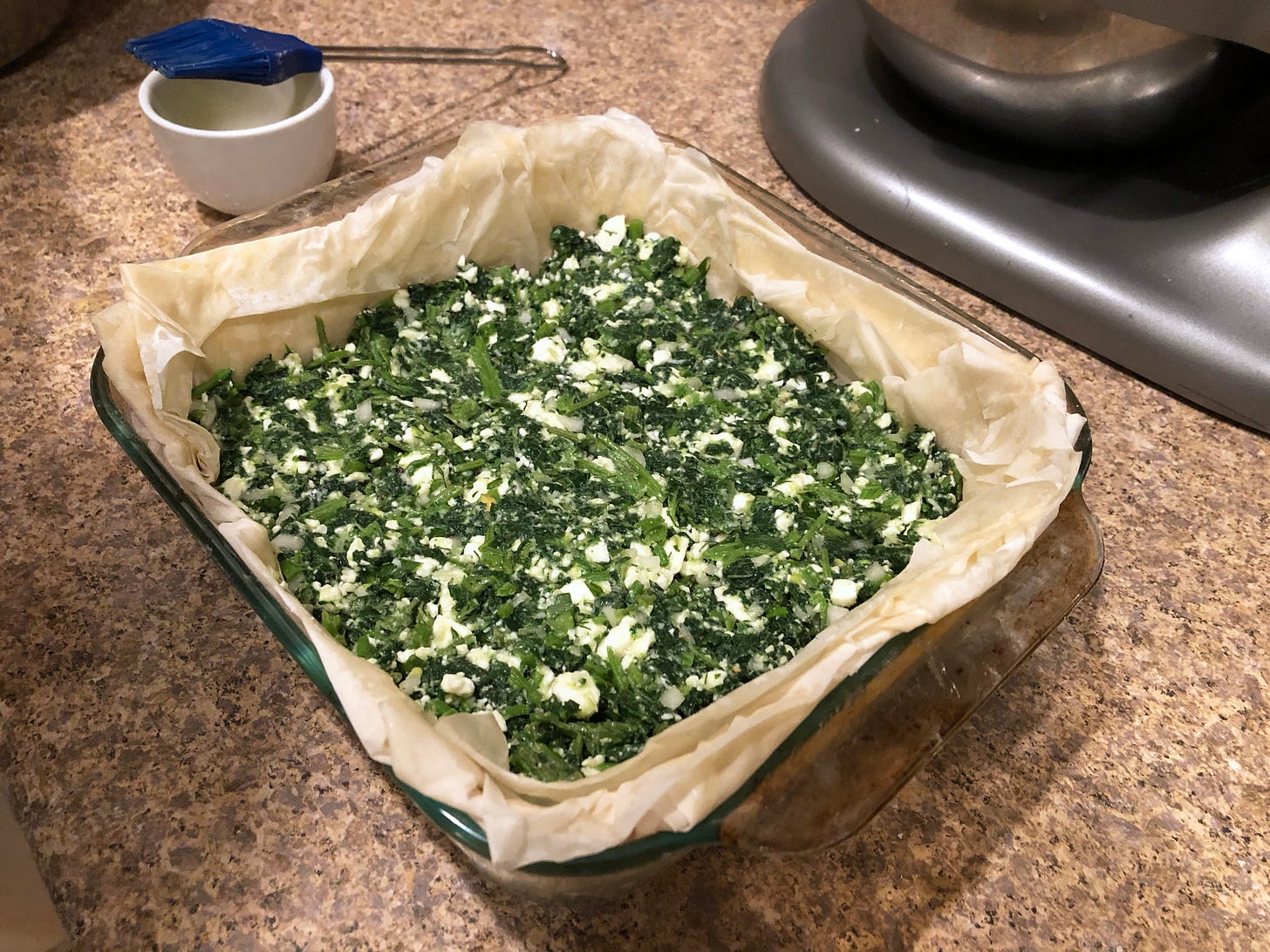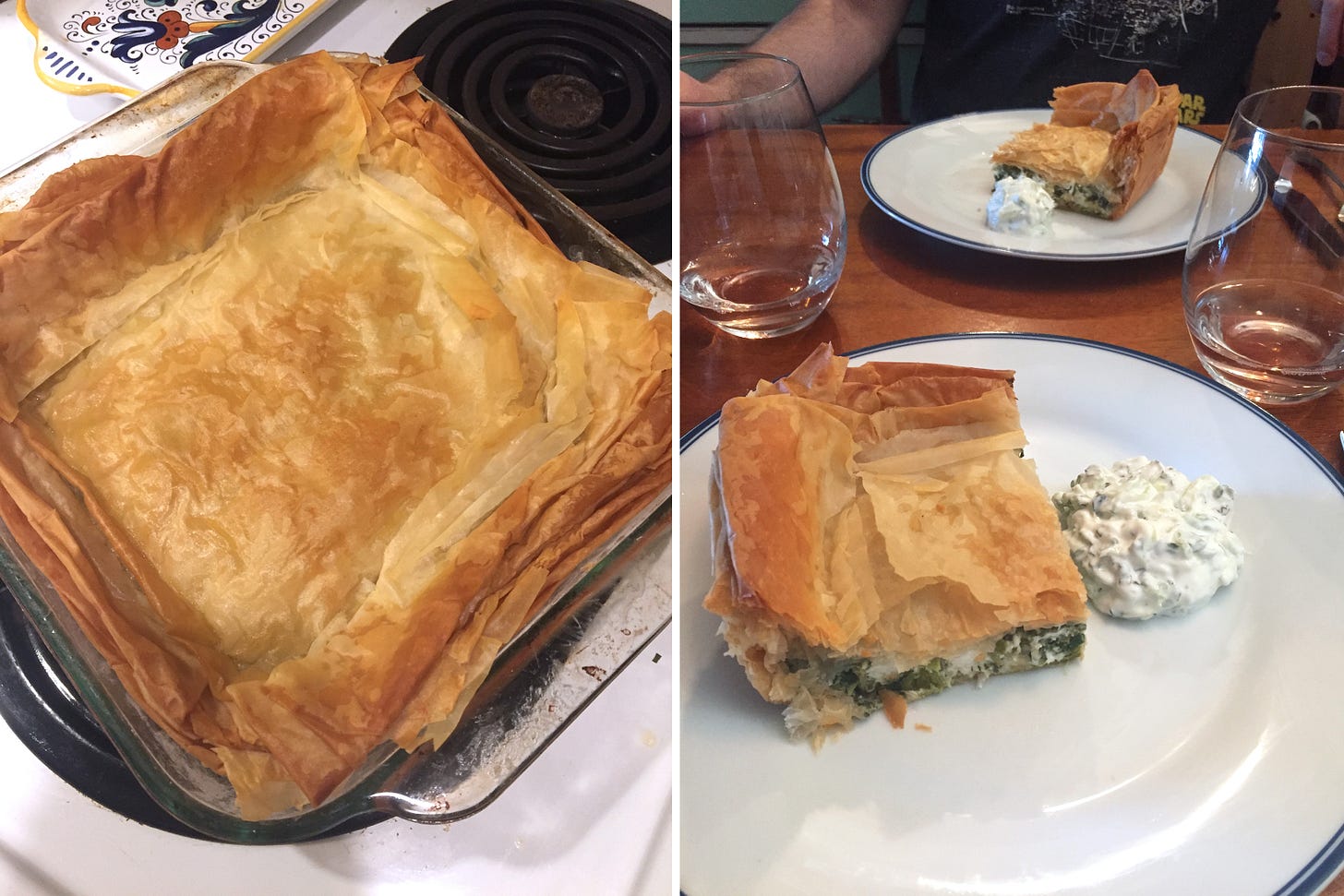Here we are at the end of another week. So much has happened that every day has itself felt about a week long, and I feel ill-equipped to talk about any of it, possibly due to my wildly fluctuating states of deep worry, general ennui, and white-hot rage. All I want to do is sit in the yard and knit and eat chips until it’s my turn for the vaccine, but life presses on.
This past week has given us some unseasonably nice weather, and I got to do some more gardening, planting seedlings for lettuces, herbs, and brussels sprouts, and putting some flowering bushes into pots to brighten up the patio area of the yard. We’re also starting to see some of the seeds I planted last week come up, so soon enough I’ll have some little arugula and radish babies. It looks like we’re back to rain this weekend, which means less time outside, but it also means I don’t add record-breaking levels of warmth and sunshine for the time of year to my lengthly list of worries. A week of rain in April? Sign me up for anything that feels normal.
Last week, after I shared my nettle & asparagus frittata on instagram, a friend messaged me: “Where did you get your nettles?” I answered, thinking she was looking to get some for herself, but instead two days later she came by my work with a paper bag filled with almost a pound of stinging nettles. Apparently they grow wild in her garden and they can’t use them up fast enough, so I was happy to accept.
I used half of them to make a nettle pesto, which was really straightforward: just take any standard pesto recipe and use the same volume of blanched nettles as you would fresh basil. I still wanted there to be a little bit of basil flavour, so I used about three cups of nettle and one of basil. It turned out really great— if you’ve ever made pesto with spinach or kale this gives you a similar deep green colour and fresh, earthy taste, and although I love the intensity of basil pesto, it was nice to have something with the taste of basil that’s a little mellower.
We made linguine to eat it with, and baked some vegan chick’n tenders to put on top which was excellent texturally, and got to enjoy it as our first dinner of the year outside. Jeff remarked on how cool it was that we got to make pesto for free (I reminded him that every batch of pesto involves a small fortune’s worth of pine nuts), but I am still always appreciative of a free vegetable, even if it is one that you have to fight nature in order to eat.
With the remainder of the nettles, I chose to make a spanakopita, using them in place of spinach. I absolutely love spanakopita but have never made one myself before, due to previous traumatic experiences working with phyllo pastry. This was before I was as confident in the kitchen, though, so I was ready to face it again. In restaurants spanakopita are usually in the form of individually formed pastries to make for a neater serving, but the home-style of making it like a pie in a baking dish seemed much less fussy, so that’s what we went with.
For me, most Greek food is just an excuse to eat tzatziki, so I made some in the morning in order for it to have time to sit in the fridge and let the flavours develop before dinner. The key to making both tzatziki and spanakopita is to squeeze the everloving hell out of the vegetables so that they don’t add any extra moisture to the dish, otherwise you end up with watery tzatziki and soggy pastry (I recall a friend who tried to make lasagna for the first time without cooking the spinach first, wondering why the dish came out of the oven looking like soup). With the cucumber for the tzatziki, I shred it in the food processor, salt and drain in a colander for 15 minutes, then squeeze as much water out with my hands as I can before wrapping it in a dish towel to get out the rest. The process is similar for the nettles: blanch in salted water, drain, then squeeze out the excess water in a towel before chopping.
I didn’t use a recipe for either of these, really— I added mint and garlic to the tzatziki because I like it, not necessarily because those normally get added. Aside from nettles and feta, the filling for the spanakopita involved pecorino, some minced white & green onion, chopped dill & parsley, a bit of lemon juice, and two eggs to hold it all together. Although I prefer traditional feta, we’ve mostly been buying goat feta so that Jeff doesn’t have to take lactaid with every other meal I make. Working with the sheets of phyllo wasn’t as bad as I remembered, possibly because it doesn’t matter so much if you tear it when it’s just getting pressed into a baking dish rather than being formed into individual servings. We baked it for an hour at 325° and it came out perfectly browned and crispy (our table was covered in little bits of pastry after dinner), and the filling was a wonderful mix of salty, savoury cheese and fresh-tasting herbs and nettles. The tzatziki was also a hit— though I still think it could have used a bit more garlic— and I’ve been happy to have leftovers to eat as a snack with fluffy white pita this week.
To use up the remainder of the box of phyllo, I made an apple strudel (I’m not ashamed to say I used the recipe that was on the back of the box) with some honeycrisps that were withering away in the fridge. I was surprised to see that the filling included breadcrumbs, I suppose to soak up some of the moisture from the apples while it bakes, but everything else seemed common to other apple baked goods: cinnamon, nuts (I used pecans), and sugar.
It was actually pretty quick to assemble, and came out of the oven golden brown after about half an hour. I had to try it while it was still warm, and it was deliciously flaky and not too sweet, with a nice bit of texture from the nuts and no soggy pastry on the bottom— thanks, breadcrumbs! I scoured the internet for a similar recipe to share with you, but none of them were as straightforward as the one I used, so if you want to make it, just grab some Krinos phyllo pastry from the frozen foods section next time you’re at the store and check the back of the box.
Also recently I’ve been getting back into making sprouts using a mason jar and a screen lid, so the past week has been full of radish sprout garnishes and alfalfa sprouts on top of bowls or in sandwiches and burgers. Making sprouts at home is great because they’re ready in a few days and stay fresh much longer than you’d think. I found when I was buying packaged sprouts they’d sometimes get slimy after only a day or two, but I’ve had alfalfa sprouts last ten days in a container in the fridge with a paper towel on top!
Media:
I loved reading this piece by Tejal Rao, about how expectations of hospitality have changed during the pandemic. I’ve written a lot about restaurants and the service industry in this newsletter, because it is an issue that is close to me, and this article gets to the heart of some the harmful aspects of what is expected of hosts and wait staff, particularly during the pandemic. The “customer is always right” mentality relies on a neverending well of generosity on the part of staff: underpricing menu items, partnering with third-party delivery apps, replacing or comping things that weren’t what customers expected (even if it is what they ordered), putting up with unwelcome jokes or sexual comments for fear of losing much-needed money in tips.
“Service may work one way, flowing from staff to diners, but hospitality reciprocates. At its best, it should bring a sense of safety and well-being to those dining and to those working.
The art critic John Berger often talked about hospitality as necessary to his understanding of art and culture, to the act of storytelling, to being human. Hospitality, to him, was a continuous and conscious choice — to listen, to be kind, to be open. If an exchange relied on someone’s exploitation? That wasn’t hospitality at all.”
I refuse to believe that anyone reading this has ever treated service staff with anything other than gratitude and respect. But we, the customers, must learn that low prices which never change come at a cost for workers, and that it’s ok to sometimes be told “no”. And staff need to feel supported in saying no, because they have wages that meet their needs and management that values their humanity over their ability to please an undeserving customer. The idea of hospitality relying on mutual understanding and care on the part of workers and customers is really the only solution for a future where staff feel safe and happy to come to work, and diners no longer feel that dangerous or unkind behaviour will get them what they want.
Thanks for reading— if you enjoyed this newsletter, please share it with someone new! I like providing this to you for free, but it does still involve time and effort, so donations I can use towards cookbooks or future treats are much appreciated. And finally, here is a meme that is staggering in its accuracy.







